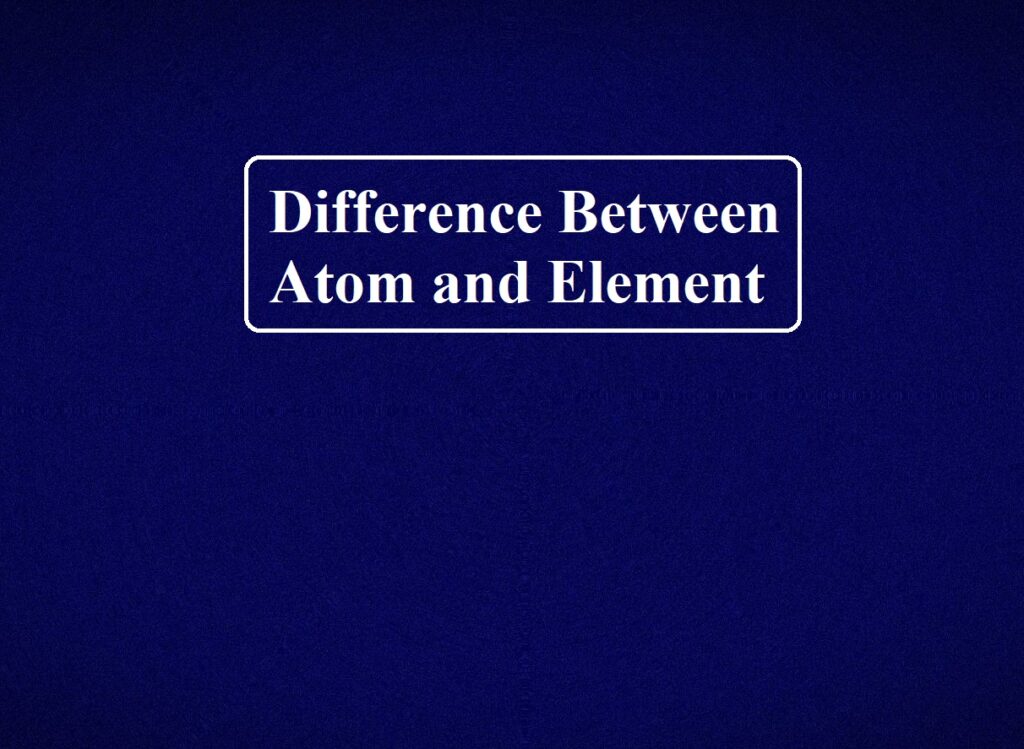Difference Between Atom and Element
Difference Between Atom and Element
When you are studying chemistry, terms like pure substance, elements, compounds, and atoms are the most commonly used terms amongst others.
We all know that a substance is made up of elements and atoms. Atoms and elements are well known to almost all around. But did you ever think about the difference between the two? Let’s find the difference between the two. The main difference is elements are made of atoms. Other differences are given below:
| S. No. | Element | Atom |
| 1. | An element is a primary form of a substance that cannot be further broken into a simpler form. | An atom is the smaller particle of an element. |
| 2. | A particular element is composed of only one type of atom. | An atom is the smallest amount of an element. It is composed of sub-atomic particles neutrons, protons, and electrons. |
| 3. | When all bound atoms are of similar type i.e alike, they form elements. | Atoms combine to form molecules. |
| 4. | When all bound atoms are alike, they form elements. | Atoms have the same numbers of protons. |
| 5. | Elements are larger and heavier in mass. | Atoms are very small particles, and they cannot be seen through a microscope. |
| 6. | The periodic table shows chemical elements | The periodic table shows different species of atoms. |
Advertisement




